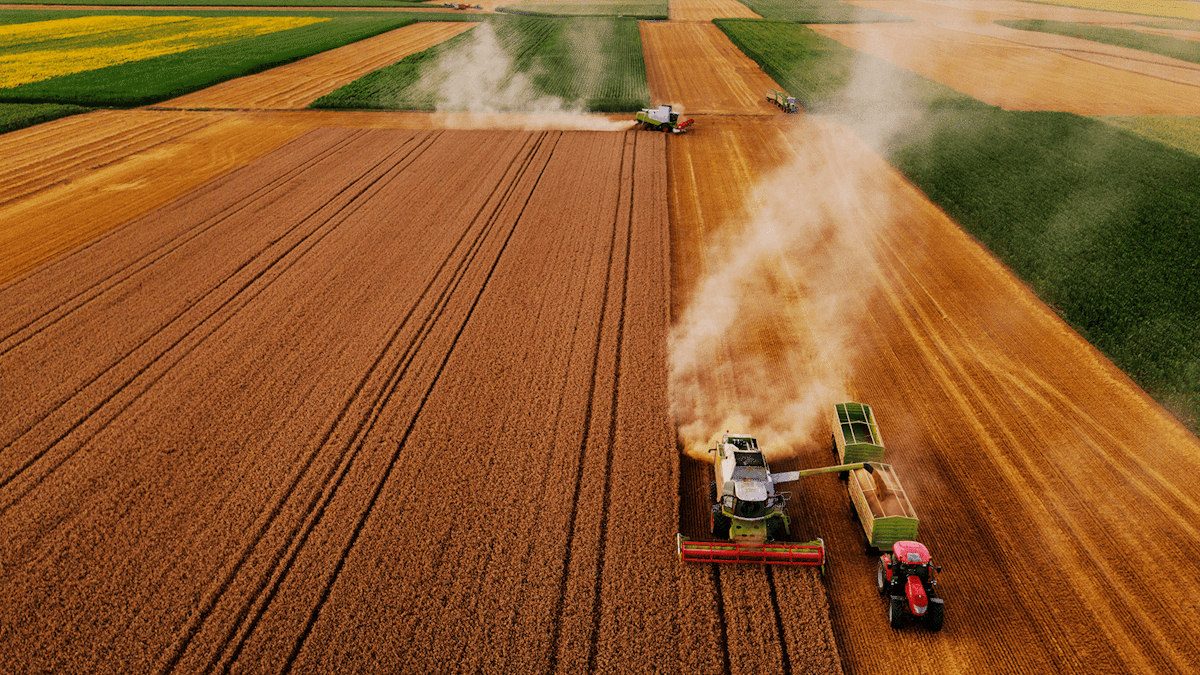The USDA’s Latest Investments in Climate-Smart Agriculture are Just a Start
Environmental and agriculture groups are right to celebrate Biden’s latest climate largesse, but agricultural research remains underfunded.

-
-
Share
-
Share via Twitter -
Share via Facebook -
Share via Email
-
Earlier this month, the USDA announced a $2.8 billion investment in 70 projects selected under the Biden administration’s Partnerships for Climate-Smart Commodities funding opportunity. The pilot projects will create and expand market opportunities for U.S. agricultural commodities produced using climate-smart practices.
This funding marks a huge step toward de-risking the implementation of existing climate-smart practices, like the use of cover crops and manure management. While increasing the adoption of these protocols is crucial for reducing agriculture’s carbon footprint, we’ll also need new technology to decarbonize the sector enough to meet the country’s climate goals. And that will require substantial innovation supported by public funding for agricultural research.
The magnitude of interest in the Climate-Smart Commodities initiative, announced only in February of 2022, was unprecedented. Applications poured in from every state and totaled over $20 billion in requests for funds. In addition to the 70 projects that were eventually selected, a second pool of funding will be awarded later this year. This will round out USDA’s total investment at more than $3 billion, tripling what the administration originally announced it would fund. Meanwhile, in its statement this month, USDA noted that on average, over 50 percent of the federal investments in the first round will be matched by private and other non-federal funds, for a total outlay of about $4.2 billion.
To be considered for funding, proposed projects had to focus on the on-farm, on-ranch, or in-forest production of climate-smart commodities. Many of those selected will contribute to developing markets for their climate-smart commodities, and some will pilot measurement and verification methods to determine the greenhouse gas benefits of these agricultural practices. The non-profits, research universities, private companies, and multinational food companies partnering on these projects are required to provide technical and financial assistance to producers who voluntarily participate.
The selected projects include a focus on climate-smart agricultural practices that reduce greenhouse gas emissions or improve carbon sequestration including, but not limited to, the use of cover crops, no-till practices, improved manure management, feed management to reduce enteric methane emissions, and enhanced efficiency fertilizers. Several of these practices are underfunded in current public agricultural research programs—especially when taking into account their potential mitigation potential. For instance, enteric methane (generated through cattle and other ruminants’ digestive processes) is responsible for almost 30 percent of U.S. agricultural greenhouse gas emissions. But, less than 2 percent of funding from USDA research agencies for climate mitigation is devoted to projects focused on enteric methane.
When taking a closer look at the projects selected for funding, many are set to involve efforts to quantify the climate impacts of various climate-smart practices. Of the 23 largest grants (awardees will receive $50 to $95 million), 6 plan to conduct this type of research—quantifying, verifying, or otherwise measuring the ecosystem, carbon, or climate benefits and tradeoffs of climate-smart commodity production practices.
Eventually, that work could lead to new ways to measure the impacts of climate-smart technologies and practices on emissions. Yet this $2.8 billion in new funding does little to actually drive research and development (R&D) of new practices. Basic research underpins the United States’ ability to generate and improve new practices or technologies such as higher-yielding crops and livestock, fertilizer manufactured with zero-carbon energy sources, or crops bred to sequester more carbon. Without it, producers will not be sufficiently equipped to optimize GHG emission mitigation, soil carbon sequestration, and all of the other positive climate outcomes that the Climate-Smart Commodities pilots seek to reward.
In other words, without further investment in agricultural R&D, the benefits of the Climate-Smart Commodities program will only go so far. Opportunities to step up research investments have come and gone, with Congress making little headway. Over the last two decades, public investment in agricultural R&D fell by a third. Even the largest recent piece of climate legislation, the Inflation Reduction Act, which directs $21.25 billion for the adoption of “climate-smart agriculture,” leaves out funding for agricultural research programs and agencies. Research remains a critically underfunded area as the United States attempts to address agriculture’s nearly 600 million metric tons of carbon-dioxide equivalent emissions per year, which account for approximately 11 percent of total U.S. greenhouse gas emissions.
USDA estimates that over the course of the one to five-year-long Climate-Smart Commodities projects, more than 50 million metric tons of carbon dioxide equivalent will be sequestered, putting costs at about $84 dollars of investment per metric ton. According to a recent analysis commissioned by the Breakthrough Institute, increasing U.S. agricultural research spending would have a much greater effect. More specifically, doubling public US agricultural R&D spending would reduce global emissions by 213 million metric tons of carbon dioxide-equivalent per year, with a mitigation cost of $12 per ton of abated emissions.
The 2023 Farm Bill marks the next legislative opportunity for Congress to support agricultural research programs. To complement and go beyond USDA’s Climate-Smart Commodities program and provide farmers with the tools necessary to fight climate change, Congress must make meaningful investments in our agricultural research agencies.

